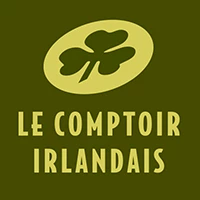
In Scotland, to kilt historically means to tuck up the clothes around the body. The word derives from old Norse "kjalta", a word of Scandinavian origin. Contrary to public opinion, the kilt does not belong only to Scottish culture but is also worn in Ireland and even Brittany! During the sixteenth century, the kilt was a wide woollen cloak wrapped around the body, draped over the shoulder and secured with a belt. Originally, the kilt would be 6 to 7 meters long! The "great kilt" (Feileadh Mor) is replaced with only the bottom part of the kilt to fit the battlefield. This tailored kilt is referred to as the Feileadh Beg, the small kilt. 
|
|
 |  |
1746: the "Dress Act" makes it illegal to wear a kilt or any tartan. The English governement undertakes to control every Scottish warriors and their clans. The law is revoked in 1782 and the freed kilt becomes a symbol of Scottish identity. From 1822 onwards, all the tartans (checked patterns) that belong to Scottish clans are registered in a guide that seek to authentify the identity of the clan. The kilt is firstly a man's garment... | Selection for men 
| | |
|
 |
Beware if you're wearing a specific kilt and you haven't been officially authorised to! Wearing a kilt means that you are adopting the owner's identity.
For example, wearing the Royal Stewart tartan, means that you're a subject of Her Majesty The Queen of England. Today, the kilt is worn for wedding celebrations, sports competitions and music and dance contests, but has also been
reintroduced as a casual outfit. Some of the tartans, such as the Royal Stewart, became items of counterculture, and are now widespread and very popular. |
|
 |
Jean-Paul Gaultier reused it in his fashion designs. It has also been adopted by Royal Families such as Charlène de Monaco or Lady D.
Many celebrities have worn the kilt, such as Ewan McGregor, Sean Connery, Mel Gibson starring in "Braveheart", a story of the Highlands uprisings, Liam Neeson in the "Outlander" series (pictured above) or Marylin Monroe (pictured below).
| Selection for women 
|
|  |
 |
 | The kilt accessories are: the laced cotton shirt, the "spencer" jacket, a sporran, a purse connected to the belt with a chain, a pair of woollen socks wih "flashes" on top, reminding of the tartan on the side of the leg. Eventually, the kilt pin adds a final touch to the outfit. It is actually used as a weight – and not a pin – to keep the front flap in place. |

|
|
The various tartans | |














